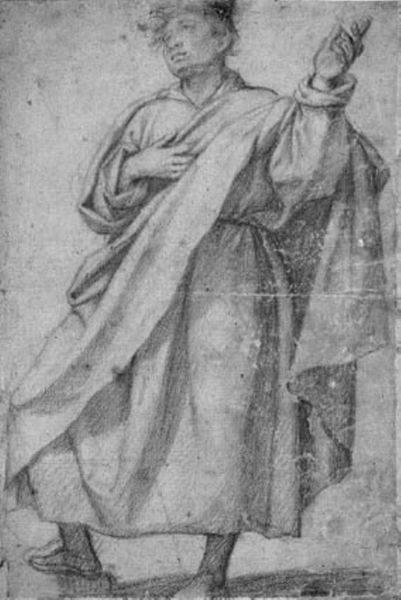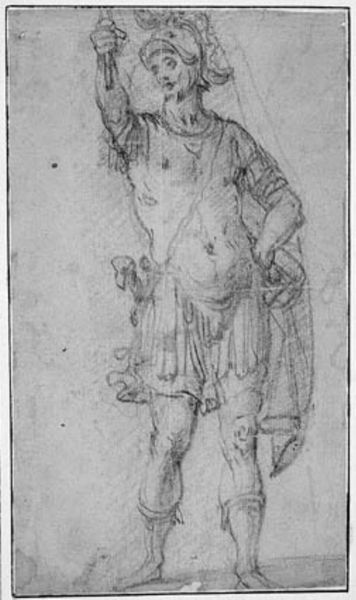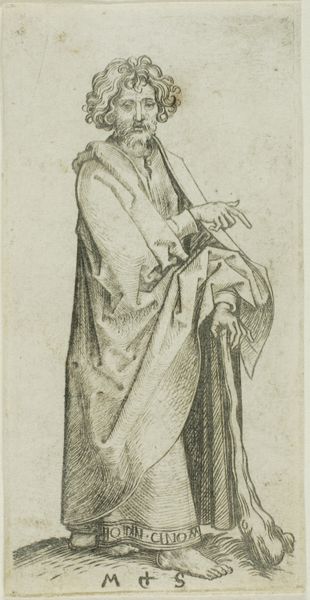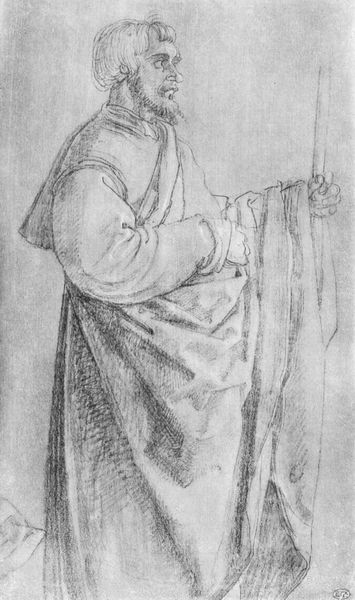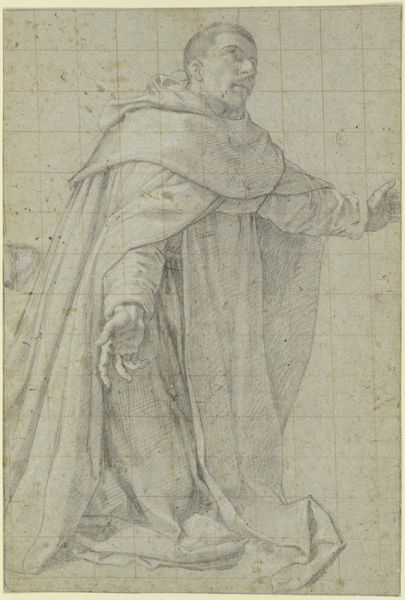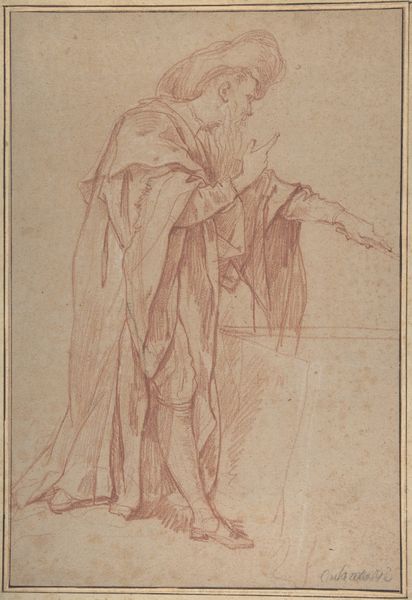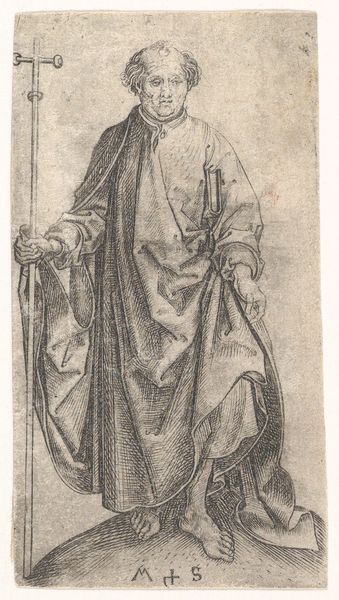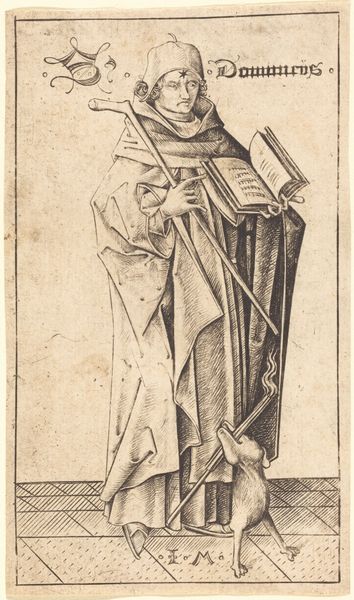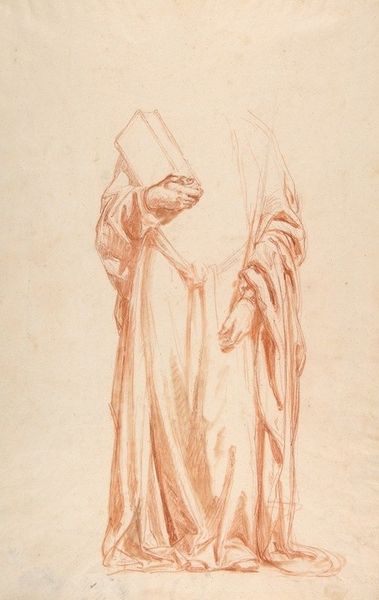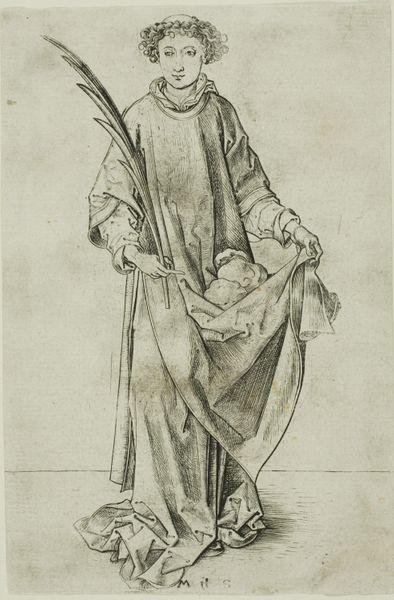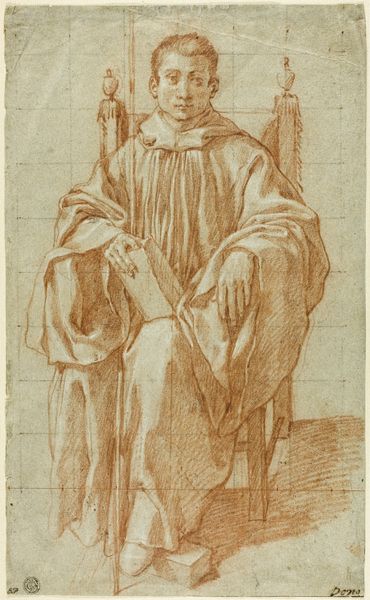
drawing, pencil
#
drawing
#
mannerism
#
pencil
#
academic-art
Dimensions: 405 mm (height) x 262 mm (width) (bladmaal)
Curator: Here we have "A cleric standing with arms extended" by Ottavio Vannini, likely created between 1585 and 1644. It’s currently held at the SMK, the Statens Museum for Kunst. Editor: My first impression is one of somberness; a study in greyscale, a man frozen mid-gesture. I am really interested in the composition and the way light and shadow fall on that cloak. Curator: It's a drawing, primarily in pencil, which certainly accounts for the limited color palette. Looking at it from a materialist perspective, I find myself wondering about the type of paper used, the specific pencil hardness, and what those choices say about the artist’s training and resources. Editor: Exactly, the materiality, that is intriguing. Beyond that, it feels important to consider this figure within its socio-political context. Who was this cleric, what was his role, and how does this portrayal either reinforce or challenge the power dynamics of the church at the time? Was this preparatory study, or a commentary? Curator: That brings up another element—the Mannerist style in combination with Academic Art. Was this a piece intended for private study or perhaps part of a larger project? What type of artistic labor are we witnessing, in comparison to say, other contemporary forms like fresco work. Editor: And, I think we should look into how representations of religious figures might reflect shifting attitudes toward faith and authority. Are we witnessing a sincere depiction of piety, or perhaps a more subversive interpretation of clerical power? Considering that the work portrays the body type of the cleric, is this also intended to signal a man of significance? Or is that to do with the cloak? Curator: Interesting considerations. When examining the methods used by Vannini, especially the quick and repetitive hand movements of pencil, were they efficient, did they reflect the economics of artistic production within his milieu, versus using painting for example? What materials and techniques did he employ when creating monumental church murals or frescoes compared to this preparatory pencil sketch? The value then might reflect on the division of artistic and artisan work at the time. Editor: Exactly, by studying his body of work together we can glean insight, the economic pressures present might reveal something significant. I think this small but potent drawing offers insight not only to technique and materials of its creation, but its possible influence and intent.
Comments
No comments
Be the first to comment and join the conversation on the ultimate creative platform.
